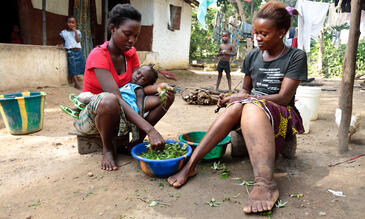
Lymphatic filariasis is caused by thread like nematode worms that live in the lymphatic vessels of humans. It is estimated that up to 120 million people in 83 countries worldwide are affected by some form of filariasis. Lymphatic filariasis is also known as elephantiasis – this is because people suffering with lymphatic filariasis can develop swollen limbs and thickened skin which resembles the legs of elephants.
Life Cycle
Lymphatic filariasis is transmitted by infected mosquitoes. When an infected mosquito bites and takes a blood feed, worm larvae transfer from the mosquito onto the bite site where they enter into the body and move towards the lymphatic system – the system in the body which regulates the balance of fluids and fights infection. Here it will take the larvae 6 months to 1 year to develop into adult worms; the males will grow to approximately 2-4 cm long and the females to between 4 to 10cm.
After mating, the females release thousands of larvae into the lymphatic system. These larvae migrate into the blood stream and transfer back into the mosquito when it bites. Once inside the mosquito, the larvae move to the mosquito stomach where they shed their sheaths before entering the mosquito body cavity and eventually into the flight muscles. After 10 to 14 days the juvenile worms are ready to migrate into the mouth-parts of the mosquito and the cycle is completed when the mosquito bites again.
The Life Cycle of Lymphatic Filariasis in humans
WHO Lymphatic Filariasis Fact Sheet
Symptoms
Usually people suffer from swollen legs due to old worms dying and causing blockages in the lymphatic system, and arms, breast tissue and groin areas can also become affected. Skin thickens and folds and lesions and knobs can grow to give the skin texture a blistered appearance. Victims of the disease suffer reduced mobility, poor quality of life and social exclusion.


